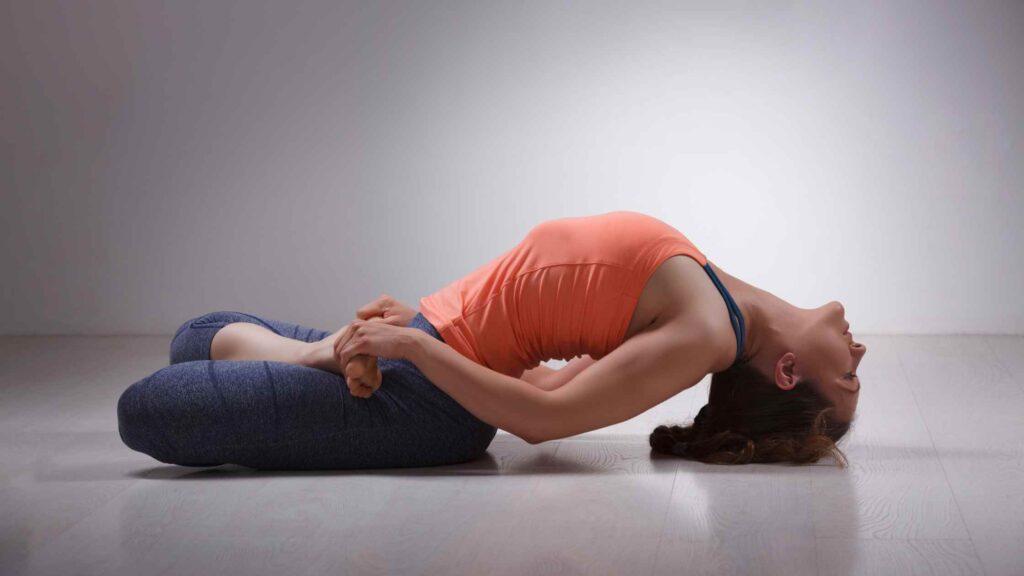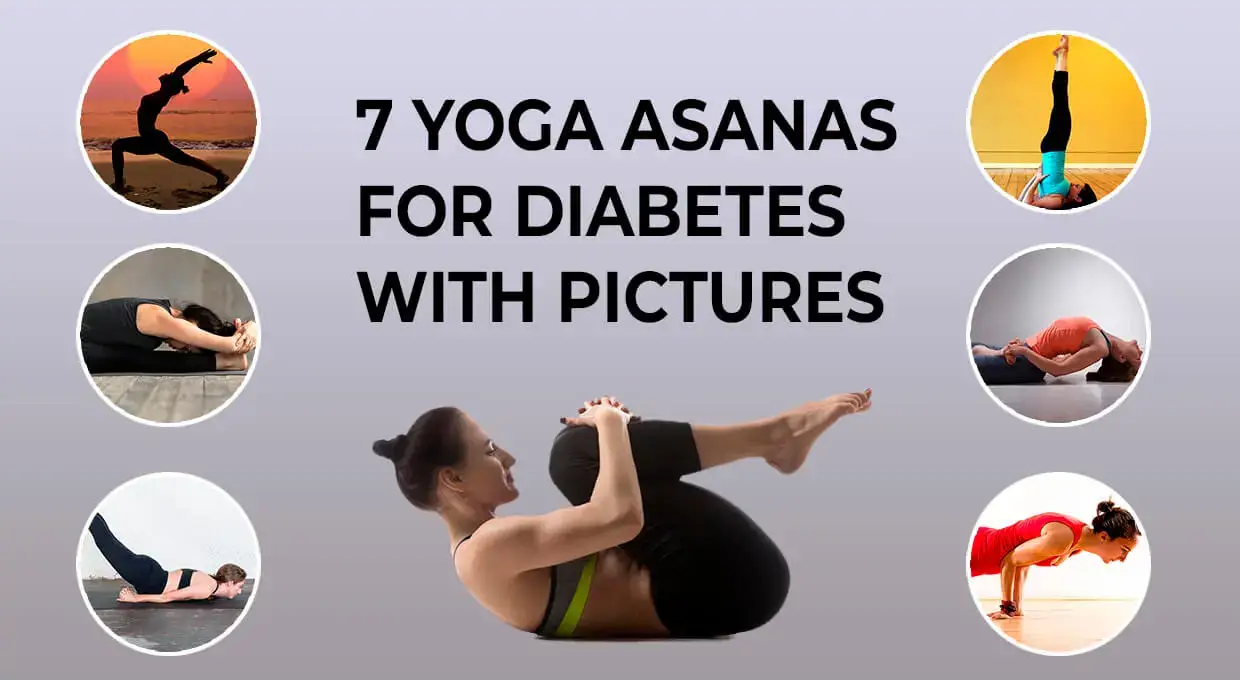Last Updated on December 27, 2024 by Dr. Mansi Srivastava
As we age and grow older, we become prone to various physical disorders and diseases. One of the most prevalent disorders among elderly not just in India, but across the globe.
Although diabetes is not curable, it can be managed by using some modern medicines as well as alternative systems of medicine like Ayurveda and adopting healthy lifestyle changes. In this post, we’ll talk about 7 yoga asanas for diabetes.
Is Yoga Good For Diabetes?
Since it was created and discovered by saints in the Indian subcontinent 5,000 years ago, yoga has been healing people. It not only aids in the body’s fat removal, but it also tones muscles and stimulates the mind. As a result, it stabilizes blood sugar levels and enhances insulin production.
Due to lifestyle disorders, diabetes is a problem that has been observed to affect millions of people in India. People with diabetes have frequently been observed to inherit their symptoms from their parents and other blood relatives.
Which Yoga Is Best For Diabetes?
Any yoga that you choose depends on the range of sugar levels in your body, your stamina, comfort, and physical and mental wellness. Any asana of yoga is not an exercise but it is about stimulating the body and mind in absorbing the positive things from the environment and leading a long-lasting lifestyle.

There are several yoga asanas for diabetes, and you can select any of them for managing diabetes and its complications. Information regarding such 7 yoga postures is given below:
7 Yoga Poses for Diabetes With Pictures
You can recommend any of the yoga postures for your family members if such a particular individual is experiencing a tough time controlling rising elevations of sugar.
1. Surya Namaskar or Sun Salutations

The Surya Namaskar is a series of yoga poses designed to strengthen and relax the body. These poses include Pranamasana, Hasta Uttanasana, Hastapadasana, Ashwa Sanchalanasana, Dandasana, Ashtanga Namaskara, Bhujangasana, Adho Mukha Svanasana, Ashwa Sanchalanasana, Hastapadasana, Hastottanasana and Tadasana.
They are designed to deepen the body and promote relaxation. The goal is to achieve a balanced, energized body, aiding in self-improvement.
Benefits of Surya Namaskar or Sun Salutations
- It will open up the blocked heart tissues.
- It will strengthen the muscles.
- Boosting optimum blood sugar levels.
- Enhancing flexibility in the limbs and entire part of the body.
- By bringing relief from the unhealthy cholesterol levels in the body.
How to Do Surya Namaskar?
- There are 12 different poses associated with Surya namaskar or sun salutations. You will be initiating with Pranamasana. It is just the beginning wherein you will be standing on the mat and folding your hands. Before you will be standing by balancing on your feet. There is a need to maintain the gap between the two legs in the standing posture to balance the posture.
- As you move in with the sequences of different postures including raising arms to pose twice or hasta uttanasana, stick pose or dandasana, standing forward bend or hastapadasana, mountain pose or tadasana at the end, you will have to keep pushing your pelvis forward and straightening your knee.
- In every step, you can go with the instructor’s guidance so that you avoid any mistakes during the posture.
To take it as a precautionary note, one must not practice surya namaskar who is suffering from issues in the lower part of the spinal cord and hernia.
Also Read: Simple Ayurvedic Home Remedies To Control Blood Sugar Levels
2. Paschimottanasana

It is the seated posture bend yoga that any diabetic can practice to reduce their unhealthy weight which may be causing troubles with your digestive system. It will give a boost to the pancreas functions. It will enable the production of insulin and reduce blood sugar.
Benefits of Paschimottanasana
- Improves the muscular strength in every part of the body including the area around the abdomen.
- It enhances flexibility in the spinal area.
- It reverses acidity and excess blood sugar in the body.
- It also brings relief from the acidity
How to do Paschimottanasana
- Sit with legs stretched forward.
- Bend forward in this seated posture and lock your feet with your arms.
- Move your head forward closer to your legs.
- Let your head touch your legs.
3. Shalabhasana

It is the yogic posture that you make like a grasshopper. It is also known as the locust pose. It will help in bending the spine, improving the muscles in the back side of the body, and stimulating the functions of internal organs that get damaged by a rise in blood sugar levels.
Benefits of Shalabhasana
- As many diabetic persons may struggle with obesity during high blood sugar conditions, it would help in reducing the fats around the stomach, hips, and thighs.
- It will make the body flexible from head to toe by bringing relief from joint pain and stress.
How to do Salabhasana?
- Lie down on your stomach.
- Keep your hands downwards in this specific position beside your thighs.
- Remain in this position at a 180-degree angle.
- Raise your chest and head in this pose along with your knees.
- Remain in this position for at least 30 seconds to 1 minute and further extend the time as per your efficiency.
4. Sarvangasana

It is a shoulder stand posture where the entire body is resting on the shoulder. It improves the circulation of blood and enhances the calmness. If the Sanskrit term Sarvangasana is broken into three words then Sarv indicates all, ang means limbs and asana relates to posture.
Benefits of Sarvangasana
- It improves the digestion system.
- Revitalize the sensory nerves.
- Brings relief from blockage in the tissues connecting to the heart and other organs.
- Improving heart functions by bringing relief from high cholesterol.
- It maintains the high blood sugar at an optimum level.
- Lowers down obesity.
How to do Sarvangasana?
- Lie down with your back on the mat.
- Keep your hands aligned with your thighs together.
- Raise your feet together and roll your feet backward to touch the floor.
- In the next step, try to raise your feet together by giving support to your back on both sides with your hands.
- Try to remain in this position as long as you feel comfortable.
5. Matsyasana

It is about leaning back by turning your upper part of the body towards the floor and making a posture like a fish. You can keep your lower limbs in either in Padmasana posture or in straightened conditions. Take the instructor’s guidance to learn this yoga for diabetes control.
Benefits of Matsyasana
- It revitalizes the functions of the pancreas.
- Stimulates the production of insulin.
- Maintains the blood sugar at the optimum level.
- Minimizes abdominal fats.
- Bring relief from poor vision.
How to do Matsyasana?
- Firstly, lay your body in a seated position.
- Fold your legs like the padmasana pose.
- Bend your upper part of the body backward.
- Be in a posture where you have lifted your trunk and your head touches the ground.
Also Read: Best Yoga Poses for Piles Patients
6. Mayurasana

This asana resembles the way a peacock stands on its two legs. But over here, if a human tries to do this asana, he will be balancing his body on his two elbows.
It may be challenging for many but it will not only help in balancing the metabolism but improving the muscle strength of the elbows and other parts of the body. It is indeed an effective yoga for diabetes control.
Benefits of Mayurasana
- It removes the toxins from the body.
- Maintains high blood sugar levels at the optimum
- Eliminates unnecessary fats from the body and boosts strong body structure.
How to do Mayurasana?
You can take the support of any instructor to perform this yoga. in a stepwise method:
- Keeping the folded knees and toes raised on the ground.
- Join the elbows together.
- Now, lift your entire body together on the raised elbow.
- Remain in this position as per your comfort level.
- Further, you can stretch your legs and allow yourself to breathe in and breathe out for some time.
Also Read: Best Yoga Poses for Knee and Joint Pains
7. Supta Pawanmuktasana

Many people use this posture to control their acidity and fight other gut-related disorders. However, it has proved beneficial for people who are unable to balance their rising sugar levels. It is a powerful yoga for the diabetic patient of type 1 or type 2.
Benefits of Supta Pawanmuktasana
- Improves abdominal muscular strength.
- Reduces acidity and wind problems affecting the body.
- Relieves from the joint pain and so does it reduce blood sugar levels in the body.
How to Do Supta Pawanmuktasana?
- Lie down with your back on the floor.
- Keep your hands and legs straight.
- Raise your legs bend one of them and keep your bent knees on your chest.
- You can repeat this posture with the other side of your body too.
- Raise your shoulders and head together along with your knees.
Also Read: Best Yoga Postures for Addiction Recovery and its Related Effects
Conclusion
Overall, it is necessary to know that there is no cure for any type of diabetes, be it type 1 or type 2. However, you can be selective about your diet and ayurvedic medicines to maintain blood sugar levels. Whether you are suffering from a lack of insulin to control your rising sugar level or your body cells do not respond to insulin, you can learn different asanas of yoga to prevent diabetes.
Chronic diseases like diabetes, digestive system disorders, and kidney problems can affect us as we age. Yoga, a key component of ayurvedic treatment, supports pancreatic beta cell renewal and insulin production. 7 yoga asanas, including Surya Namaskar, are recommended for managing diabetes and its complications, reducing weight, improving muscular strength, and promoting insulin production.




